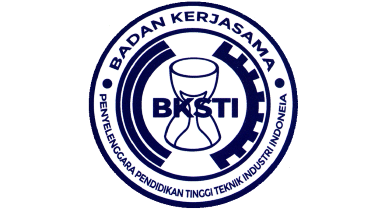Keandalan Sistem Instrumentasi dengan Metode Markov Chain
DOI:
https://doi.org/10.30737/jatiunik.v5i2.2159Keywords:
Energy, Facilities, Markov chainAbstract
The reliability of electrical energy is achieved to minimize outages, periods of outages, the time of completion of outages and the total repair time during the outage. Electrical energy as the main energy and can prosper human life. However, there are factors that determine the ability of improvement in the case of production. The more prosperous the user, the higher the electrical energy used. Advanced industry will not be separated from the use of very large electrical energy to ensure the continuity of production. The purpose of the study is to find out the accuracy of markov chain activities from the reliability aspect and priority of repairing boiler facilities, turbines and generators that have low reliability. The research method used primary 2014 data on boiler, turbine and generator facilities. Analysis using the markov chain method. The study found that boiler facilities had the lowest reliability value of 0.00055, boiler facilities had the least damage value of 0.01111 and turbine facilities had the least severe damage of 0.94577. From the known facilities, initial improvements are preferred to increase the value of the instrumentation system in the Pacitan PLTU.
Â
Keandalan energi listrik dicapai untuk meminimasi pemadaman, periode terjadi pemadaman, waktu kecepatan selesai pemadaman dan total waktu perbaikan selama pemadaman berlangsung. Energi listrik sebagai energi paling utama dan dapat mensejahterakan kehidupan manusia. Tetapi, ada faktor yang menentukan kemampuan peningkatan dalam kasus produksi. Semakin sejahtera pengguna, semakin tinggi pula energi listrik yang digunakan. Perindustrian yang maju tidak akan lepas dari penggunaan energi listrik yang sangat besar untuk menjamin kelangsungan produksi. Tujuan penelitian untuk mengetahui akurasi aktivitas markov chain dari aspek keandalan dan prioritas perbaikan fasilitas boiler, turbin dan generator yang memiliki keandalan rendah. Metode penelitian menggunakan data primer tahun 2014 mengenai fasilitas boiler, turbin dan generator. Analisa menggunakan metode markov chain. Penelitian ini mendapat hasil bahwa fasilitas boiler memiliki nilai keandalan paling rendah sebesar 0,00055, fasilitas boiler memiliki nilai kerusakan paling kecil sebesar 0,01111 dan fasilitas turbin memiliki kerusakan berat paling kecil sebesar 0,94577. Dari fasilitas yang telah diketahui, perbaikan awal lebih diutamakan untuk meningkatkan nilai keandalam sistem instrumentasi pada PLTU Pacitan.
References
S. D. Anggraini, “Rekayasa Produksi Biodiesel Dari Minyak Kemiri Sunan (Reutialis Trisperma Oil) Sebagai Alternatif Bahan Bakar Mesin Diesel,†JATI UNIK J. Ilm. Tek. dan Manaj. Ind., vol. 2, no. 1, p. 1, 2019, doi: 10.30737/jatiunik.v2i1.272.
S. R. Widodo and H. B. Santoso, “PENGELOLAAN PERSEDIAAN PADA PT. X DENGAN PERMINTAAN STOKASTIK DAN VARIABEL LEAD TIME,†KAIZEN Manag. Syst. Ind. Eng. J., 2018, doi: 10.25273/kaizen.v1i1.2590.
T. Scholz, V. V. Lopes, and A. Estanqueiro, “A cyclic time-dependent Markov process to model daily patterns in wind turbine power production,†Energy, vol. 67, pp. 557–568, 2014, doi: 10.1016/j.energy.2013.12.071.
S. Wei and X. Yanfeng, “Research on China’s energy supply and demand using an improved Grey-Markov chain model based on wavelet transform,†Energy, vol. 118, pp. 969–984, 2017, doi: 10.1016/j.energy.2016.10.120.
Y. Y. Hong, W. C. Chang, Y. R. Chang, Y. Der Lee, and D. C. Ouyang, “Optimal sizing of renewable energy generations in a community microgrid using Markov model,†Energy, vol. 135, pp. 68–74, 2017, doi: 10.1016/j.energy.2017.06.098.
J. Ma, M. Fouladirad, and A. Grall, “Flexible wind speed generation model: Markov chain with an embedded diffusion process,†Energy, vol. 164, pp. 316–328, 2018, doi: 10.1016/j.energy.2018.08.212.
X. dong Liu, F. Pan, L. Yuan, and Y. wang Chen, “The dependence structure between crude oil futures prices and Chinese agricultural commodity futures prices: Measurement based on Markov-switching GRG copula,†Energy, vol. 182, pp. 999–1012, 2019, doi: 10.1016/j.energy.2019.06.071.
M. D. Angelica et al., “Determinants of Time Allocation across the Lifespan A Theoretical Model and an Application to the,†PLoS One, 2012, doi: 10.1017/CBO9781107415324.004.
G. Gozgor, A. K. Tiwari, N. Khraief, and M. Shahbaz, “Dependence structure between business cycles and CO2 emissions in the U.S.: Evidence from the time-varying Markov-Switching Copula models,†Energy, vol. 188, p. 115995, 2019, doi: 10.1016/j.energy.2019.115995.
N. Yang, L. Han, C. Xiang, H. Liu, and X. Li, “An indirect reinforcement learning based real-time energy management strategy via high-order Markov Chain model for a hybrid electric vehicle,†Energy, vol. 236, p. 121337, 2021, doi: 10.1016/j.energy.2021.121337.
C. Sigauke and D. Chikobvu, “Estimation of extreme inter-day changes to peak electricity demand using Markov chain analysis: A comparative analysis with extreme value theory,†J. Energy South. Africa, vol. 28, no. 4, pp. 68–76, 2017, doi: 10.17159/2413-3051/2017/v28i4a2329.
A. Ketata and Z. Driss, “Characterization of double-entry turbine coupled with gasoline engine under in- and out-phase admission,†Energy, vol. 236, p. 121447, 2021, doi: 10.1016/j.energy.2021.121447.
S. Shelat, W. Daamen, B. Kaag, D. Duives, and S. Hoogendoorn, “A Markov-chain Activity-based Model for Pedestrians in Office Buildings,†Collect. Dyn., vol. 5, pp. 423–430, 2020, doi: 10.17815/cd.2020.78.
H. Sarjono, R. Aryanto, and Novie, “The determination of optimal inventory using Markov Chain,†WIT Trans. Inf. Commun. Technol., vol. 49, no. 1, pp. 1147–1157, 2014, doi: 10.2495/ICIE131402.
A. Baghela, “Application of Markov Process to Improve Production of Power Plant,†Int. J. Eng. Adv. Technol., vol. 2, no. 1, pp. 200–203, 2015.
X. Lin, J. Wu, and Y. Wei, “An ensemble learning velocity prediction-based energy management strategy for a plug-in hybrid electric vehicle considering driving pattern adaptive reference SOC,†Energy, vol. 234, p. 121308, 2021, doi: 10.1016/j.energy.2021.121308.
J. D. Urrutia, J. L. Meneses, and G. V. A. Antonio, “Predicting Future Monthly Electricity Consumption in the Philippines using Markov-Chain Grey Model,†Indian J. Sci. Technol., vol. 12, no. 33, pp. 1–44, 2019, doi: 10.17485/ijst/2019/v12i33/145762.
J. M. Colmenar, J. I. Hidalgo, and S. Salcedo-Sanz, “Automatic generation of models for energy demand estimation using Grammatical Evolution,†Energy, vol. 164, pp. 183–193, 2018, doi: 10.1016/j.energy.2018.08.199.
G. Zhang, E. H. Chimowitz, U. States, and U. States, “Energy network optimization using a Markov Chain-Monte Carlo algorithm,†Int. J. Eng. Sci., vol. 11, no. 3, pp. 82–94, 2018.
E. Gubiy, “The Markov chain of energy carryover reserves in models of power supply reliability in remote,†E3S Web Conf., vol. 114, no. 201 9, 2019, doi: 10.1051/e3sconf/201911403004.
V. Janko and M. Luštrek, “Using Markov chains and multi-objective optimization for energy-efficient context recognition,†Sensors (Switzerland), vol. 18, no. 1, 2018, doi: 10.3390/s18010080.
F. Peng et al., “Sequential coalition formation for wind-thermal combined bidding,†Energy, vol. 236, p. 121475, 2021, doi: 10.1016/j.energy.2021.121475.
Downloads
Published
Issue
Section
License
Information regarding Copyright and Licensing at JATI UNIK as follows:
- Licensed Use of Non - Commercial Articles will be governed by the Creative Commons Attribution license, which is featured on the Creative Commons Attribution Non-Commercial Share A Like 4.0 International License.
- The author guarantees that the articles published through JATI UNIK are original and do not contain statements that violate the law do not violate others' rights are subject to copyright, which is held exclusively by the author and free from the rights of third parties. The author is allowed to quote from various sources used for research and not to harm any party.
- JATI UNIK disseminates articles published with the rules set by Creative Commons. UNIK JATI license allows users to copy, distribute, display, and work for non-commercial purposes. Users also need to connect authors and JATI UNIK with the distribution of articles in journals.
- The Author rights, namely copyrights, ownership rights, patents, rights to use the substance of articles in the future, rights to reproduce articles for personal purposes and not to be traded, rights to conduct personal archives, rights to contract used for the non-exclusive distribution of articles published in the form a book and acknowledge the initial publication of the article originating from JATI UNIK.
- Suppose articles published by the author through JATI UNIK are compiled with other authors. In that case, it is necessary to create a form containing the authority of all authors involved in the article's production by including the agreement agreed upon by all authors in the article.
- The next point is, the agreement can be terminated if the author or JATI UNIK violates the agreement and cannot make repairs to the customer within a maximum of 2 months after being given information asking for the violation to be corrected. If there is no violation of the agreement, the license will automatically terminate and affect UNIQUE JATI UNIK.
- Regarding royalties, so far, if it is following applicable legal regulations, the author will waive his right to collect royalties on articles that have been licensed by JATI UNIK.
- In publishing the article, the editorial process is successful. JATI UNIK will continue it. JATI UNIK has the right to adjust articles related to punctuation, spelling, capital letters, references used, and usage adapted to JATI UNIK. The author acknowledges that the article can be published and accessed free of charge by the public.
Deprecated: json_decode(): Passing null to parameter #1 ($json) of type string is deprecated in /home/ojs.unik-kediri.ac.id/public_html/plugins/generic/citations/CitationsPlugin.php on line 68















